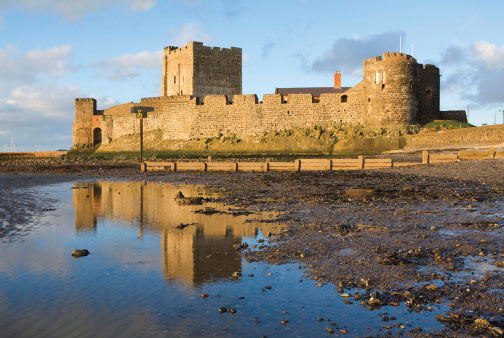
Château Gaillard and the Isle of Andely as they appear today, and as they might have appeared during the siege of 1203–4.

The tomb effigies of Henry II and Eleanor of Aquitaine at Fontevraud.

The tomb effigies of Richard I at Fontevraud and (top) William Marshal in the Temple Church, London.

A chamber inside Henry II’s great tower at Dover Castle, decorated and furnished in a late twelfth-century style.

Carrickfergus Castle in Ireland, besieged by John in 1210.
The ruins of Corfe Castle in Dorset, one of John’s favourite residences. Some people were entertained lavishly here. Others were starved to death.

A view of Runnymede, with Windsor Castle in the distance.
The seal-die of Robert Fitzwalter, one of John’s leading opponents, who adopted the title ‘Marshal of the Army of God’.

The great seal of King John, showing him crowned and enthroned.
Rochester Castle. The foremost corner of the keep was collapsed by John’s miners in 1215, and later rebuilt with a round tower instead of a square one.

Medieval warfare, as depicted in the mid-thirteenth-century Maciejowski Bible.
John’s tomb in Worcester Cathedral. The effigy was made about fifteen years after the king’s death, but the tomb chest is early Tudor.